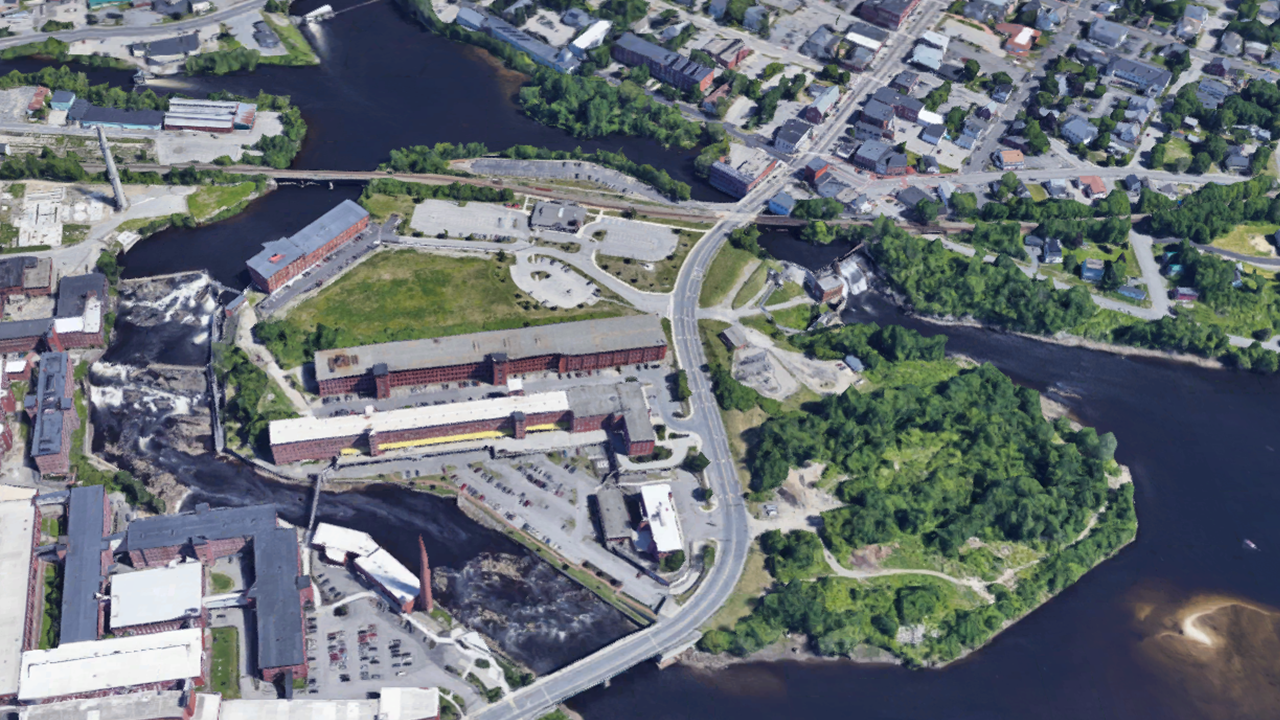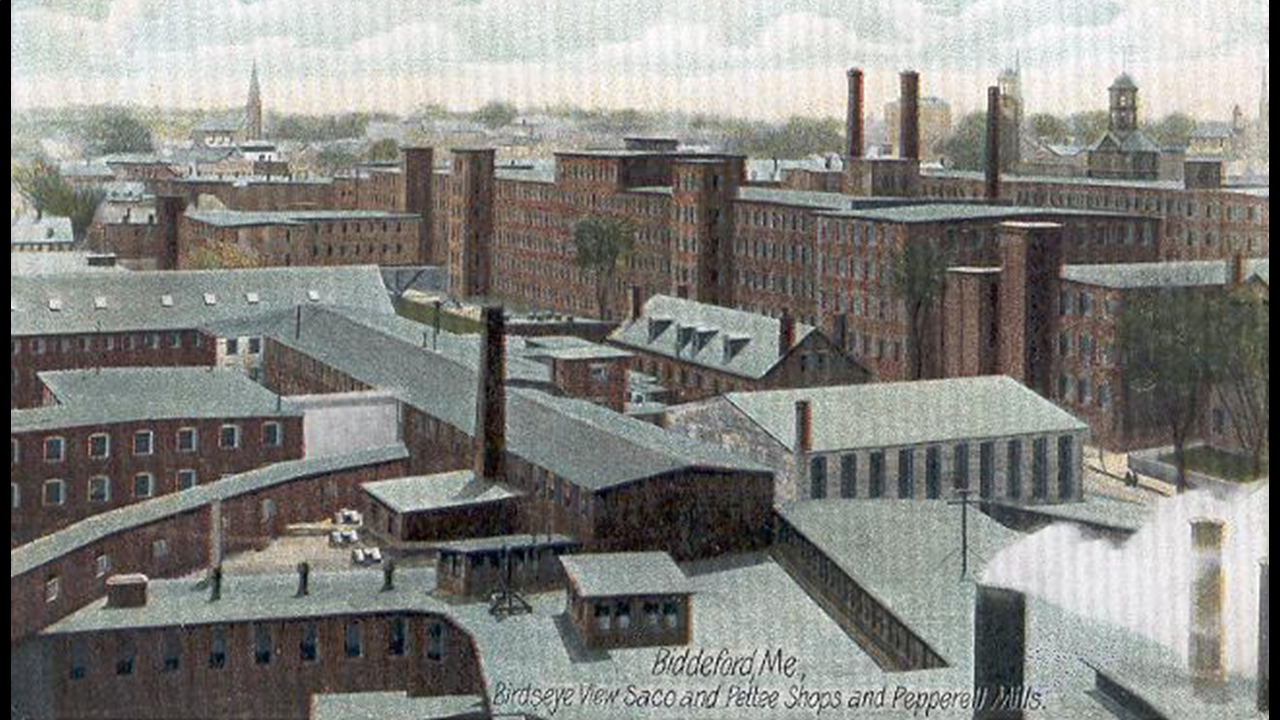Citation Video Project Team Highlights Video
The Run of the Mill Lofts building was originally built by the York Manufacturing Company in 1837-1838, as part of the company’s cotton textile mill complex on Saco Island. These buildings, which are part of the Biddeford-Saco Mills Historic District, remind us of the longstanding tradition of industrial history in Saco and Biddeford, dating back to 1653, when the first industrial complex was built. Prior to the construction of Mill No. 3, the Saco Iron Works owned the land and ran a number of factories onsite, producing a range of goods for the region. After fire ravaged the extant buildings in 1830, the business was reorganized as the York Manufacturing Company, and, over the next twenty years, York built five mills, including Mill No. 3, a four-story structure, measuring 190 feet long by 40 feet wide.
The York complex, comprised of mill buildings, multiple cotton storehouses, a boiler house, office building, and additional subsidiary buildings, largely filled the north end of the island and was profitable for over 100 years. Cotton textile production ceased in 1958, when a tannery took over the spaces until 1982. A massive rehabilitation project for the complex was begun in 1986; a number of buildings were demolished and Mills 1 and 2 were successfully rehabbed. More buildings were demolished in the 1990s, though luckily Mill 3 remained intact. The building was partially renovated in 2008, a project which created space for a brew pub on the first floor and addressed structural issues on the upper floors. Unfortunately, the national economic collapse that year prevented the completion of this initial project, and it wasn’t until recently that the building was fully restored.
The scope of work included replacement of all the building’s inappropriate one-over-one windows which were installed in the 1980s with new appropriate windows that closely resemble the historic windows. All new plumbing and mechanical systems were installed in the upper stories for the new apartments. Historic wood ceilings, beams, and columns were left in place and not covered with modern material to retain the original fabric of the industrial space. Likewise, the brick exterior walls were kept exposed, allowing the historic character to mix with the new contemporary spaces.
This adaptive reuse project created 24 units of market-rate housing on the upper stories of the building, and replaced inappropriate prior restoration work. With the completion of this project at Mill No. 3, all of the surviving buildings of the York Manufacturing Company complex have now been rehabilitated for new uses. New, market-rate housing has been created in the City of Saco, adding to the vibrancy and revitalization of downtown Saco and Biddeford. The mixed-use rehabilitation of Mill No. 3 by Dirigo Capital Advisors has returned an important part of the industrial history of Saco Island to a useful function, decades after its original use ceased with the closure of the York Manufacturing Company.
Project Participants
ROTM Lofts, LLC, Dirigo Capital Advisors
Kevin Mattson, Dirigo Capital Advisors
Kevin Tillson, Dirigo Capital Advisors
David Tucci, Dirigo Capital Advisors
Blaine Buck, Cordjia Capital Projects
Blaine Buck, Cordjia Capital Projects
DEMACON Masonry
Bruce Gammons, Gammons HVAC
CEI
David Perkins, Curtis Thaxter
Marc Powers, Purdy Powers & Co
Geoff Houghton, Run of the Mill Pub
Scott Hanson, Sutherland Conservation & Consulting




















































